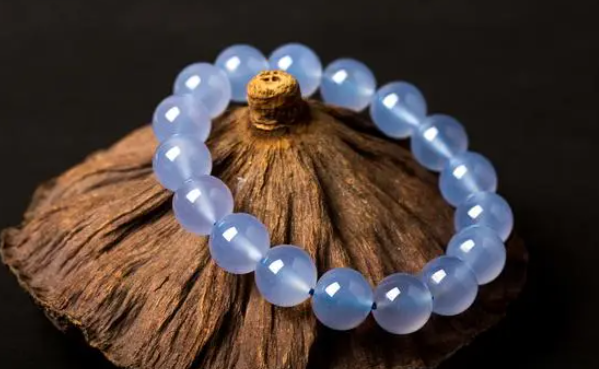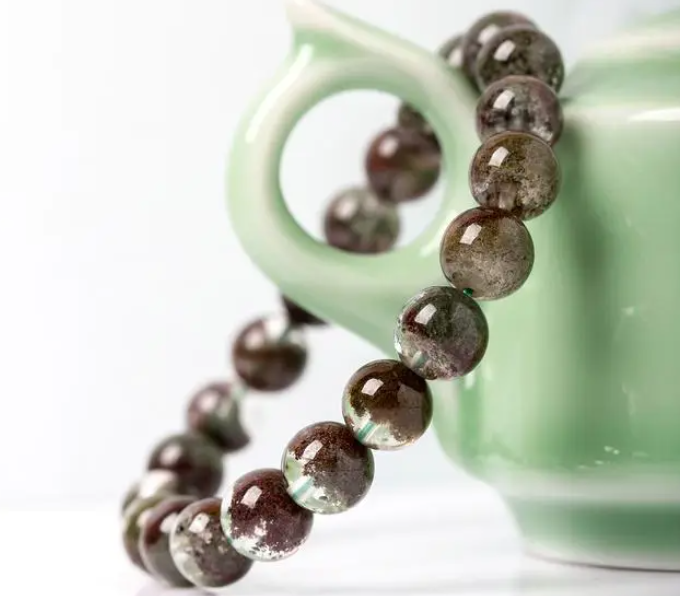How to judge the quality of crystal bracelets
Assessing the quality of a crystal bracelet can be approached from the following aspects:
I. Examining the Purity of the Crystal
- Assessment of Internal Impurities: High-quality crystals are often relatively pure with minimal internal impurities. For instance, when observing a white crystal bracelet, a superior one will have almost no cloud-like, cotton-like, or hair-like impurities inside. However, it’s worth noting that completely pure crystals are extremely rare. Certain special varieties, such as green phantom crystals, may have internal green mineral inclusions that, if shaped beautifully and evenly distributed, can add unique value and aesthetics to the crystal.
- Inspection for Cracks: High-quality crystal bracelets should ideally have no cracks or fractures. Cracks not only affect the stability and aesthetics of the crystal but may also cause damage during daily wear. Using a strong flashlight to illuminate the crystal bracelet can clearly reveal the presence of any internal cracks.
II. Evaluating the Transparency of the Crystal
- Classification of Transparency: Transparency is a key factor in measuring crystal quality. High-quality crystals typically have high transparency, like high-grade ice-type pink crystals that are clear as water. Crystals can be broadly classified into transparent, translucent, and opaque based on their transparency. Generally, the higher the transparency, the better the crystal quality, but some special varieties, such as starlight crystals with unique optical effects, may have high value even if not completely transparent.
- Light Refraction Effect: High-quality crystals exhibit a bright gloss when illuminated by light. For example, when light passes through a purple crystal bracelet, it produces a soft and bright refraction within the crystal, making the bracelet appear radiant. If the crystal looks cloudy or has poor light refraction, its quality may be poor.
III. Analyzing the Color of the Crystal
- Color Uniformity: High-quality crystal bracelets have evenly distributed colors. Take aquamarine crystal bracelets as an example; high-quality aquamarine has a uniform color distribution on each bead, without varying shades. However, for certain natural crystals, such as tourmaline bracelets, color variations are normal due to their complex composition, but if the color changes too abruptly, it may affect the overall quality.
- Color Vividness and Saturation: Crystals with vivid and high-saturation colors are of better quality. For instance, high-quality yellow crystals have a golden-yellow, bright color with high saturation, giving a rich and vivid impression. However, be cautious as overly vivid colors may indicate artificial dyeing, which reduces the natural quality and value of the crystal.
IV. Assessing the Cut and Polish of the Crystal
- Precision of the Cut: For crystal bracelets with faceted beads, the precision of the cut is crucial. A precise cut maximizes the display of the crystal’s gloss and fire. For example, faceted crystal beads should have uniformly sized facets with precise angles to reflect more light when illuminated.
- Smoothness of the Polish: The surface of the beads on a crystal bracelet should be polished smoothly, without roughness. Touching the bracelet can reveal whether it has a scratchy feel. A smooth surface not only enhances wearing comfort but also makes the crystal appear more radiant.
V. Measuring the Weight and Size of the Crystal
- Consideration of Weight and Density: Generally, the density of natural crystals is relatively constant. High-quality crystals, when of the same size, have an appropriate weight. If a crystal bracelet feels too light, it may be due to a loose texture or internal cavities. For instance, compared to glass imitations of the same size, natural crystals are heavier.
- Consistency of Size: For round-bead crystal bracelets, the size of the beads should be as consistent as possible. When inspecting, lay the bracelet flat to observe the uniformity of the bead sizes. A bracelet with consistently sized beads is superior in aesthetics and value compared to one with uneven sizes.



Rose Quartz Healing for Women Anxiety Crystal Bracelet
$29.00Original price was: $29.00.$23.00Current price is: $23.00.